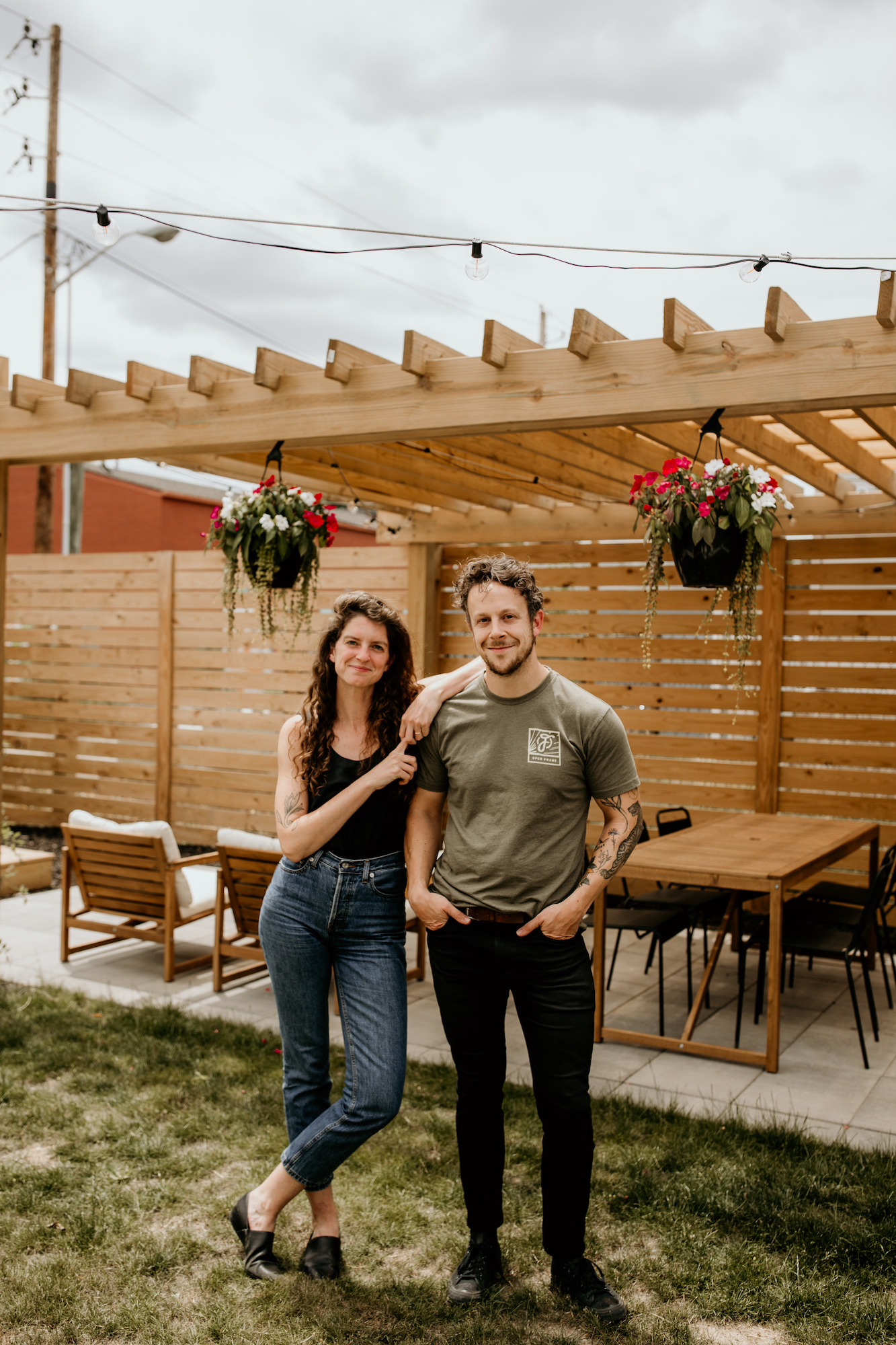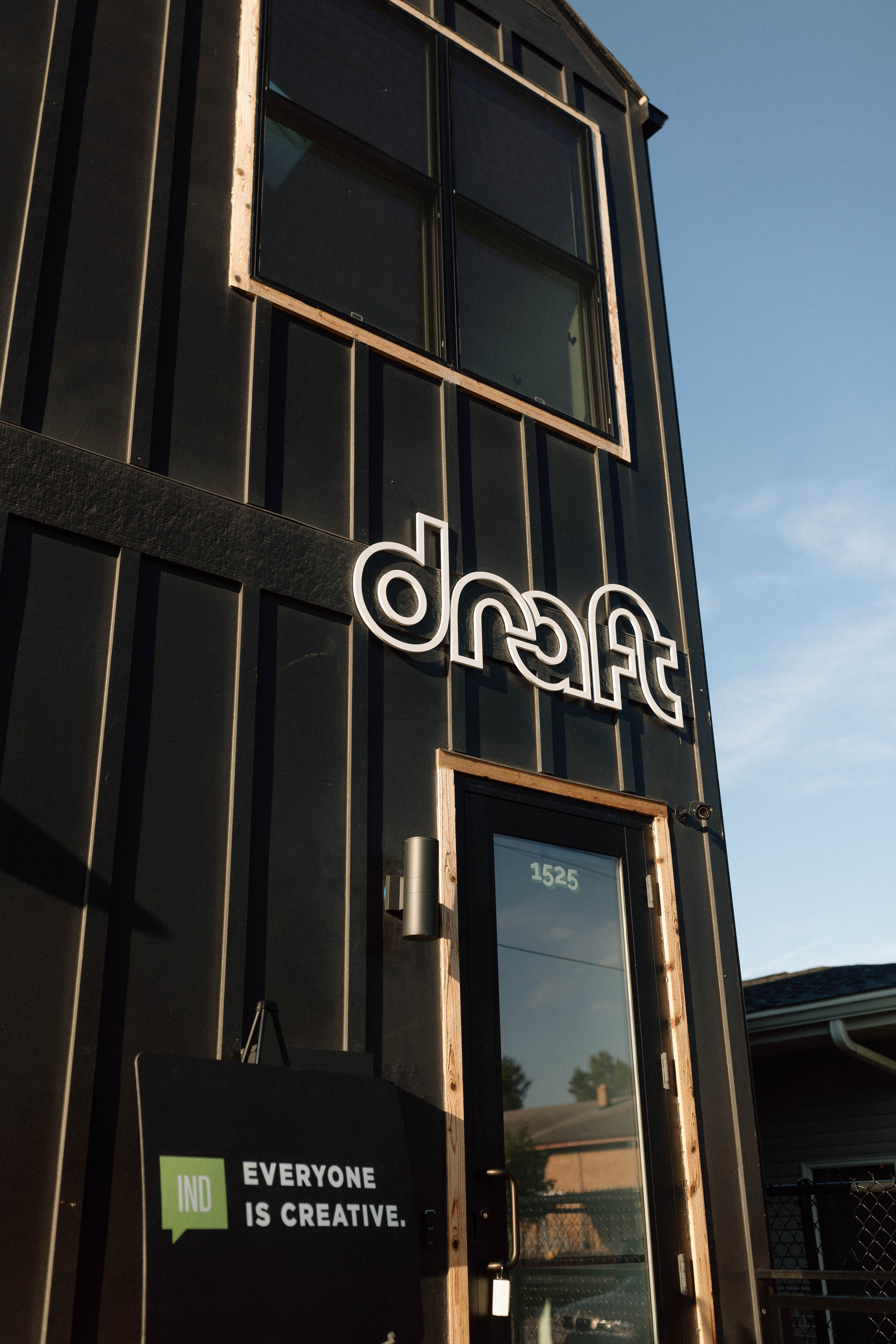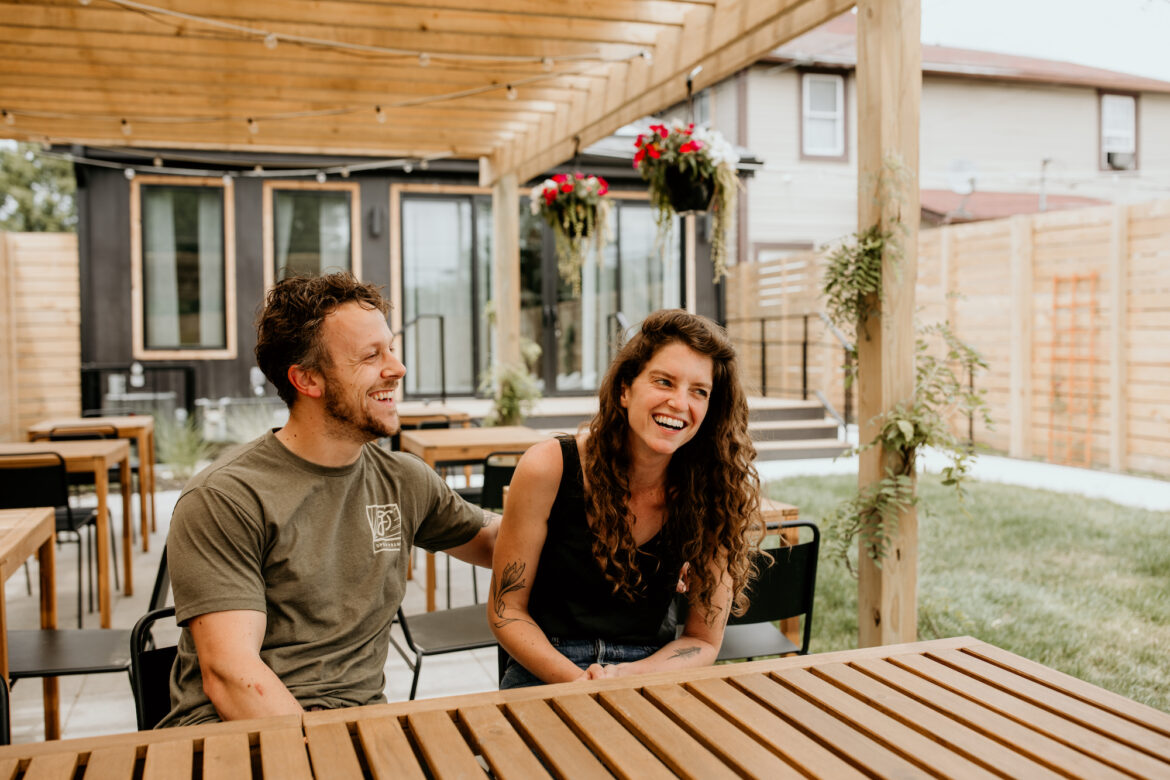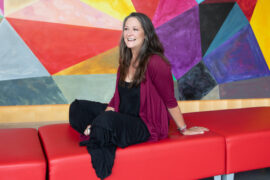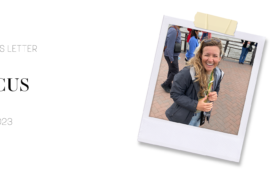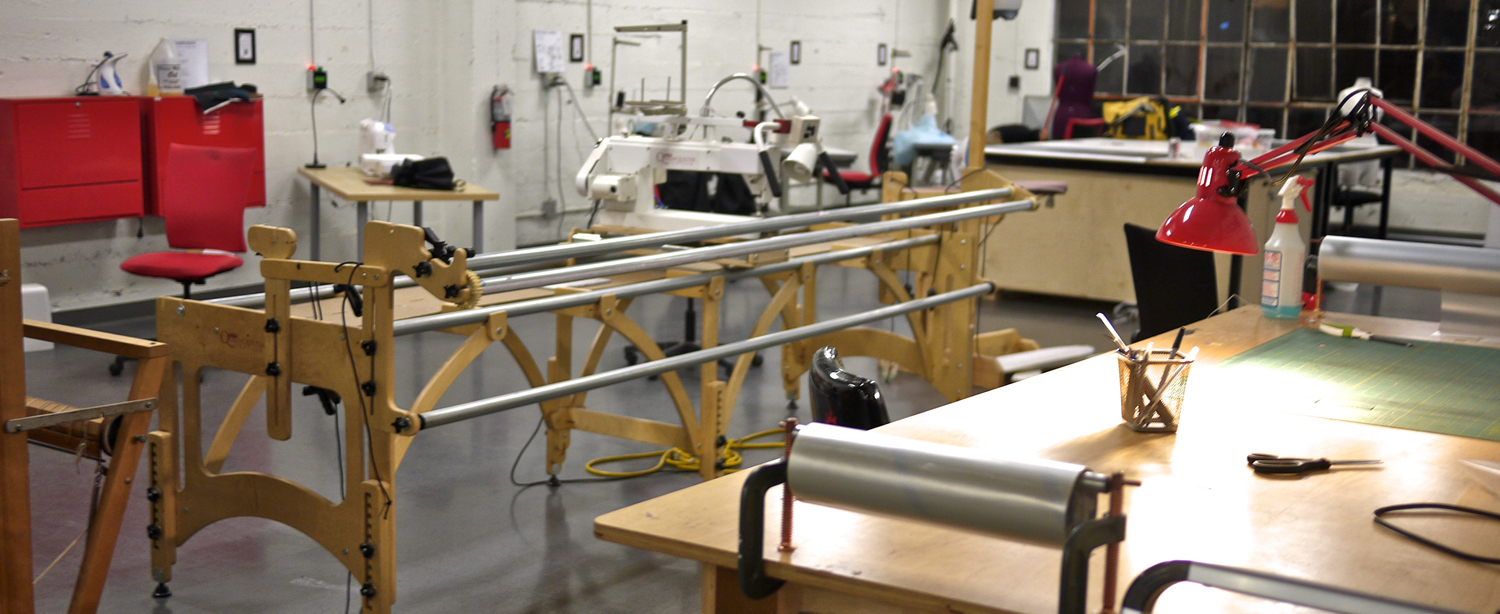The person who branded Jack a dull boy clearly never visited draft. It takes only a foot in the door and the briefest glimpse of the space–which consists of a main area, sunroom, garden, and rentable upstairs studios–to feel the sense of calm for which draft is known, conducive to both work and play.
With floor-to-ceiling windows for days, intentionally- and hand-selected decor, and that signature sense of serenity, draft finds a way to effortlessly blend grind and recreation, to create that special home-away-from-home feeling.
As the host space of June’s CreativeMornings speaker, Fred Miller, draft (and its gorgeous backyard garden-slash-patio) beckoned. Here, I enjoyed the afternoon breeze and wonderful conversation with Rebecca and Aaron Zettler–the pair that has nurtured draft into the flourishing creative space it is–to talk business, pleasure, and the fulfillment draft has allowed them to find in both.
Kate Nevers: We’ll start with a little intro to draft so that readers have a sense of what this space is. How would you describe draft in three words?
Rebecca Zettler: Curiosity, reciprocity, and respect are the backbone of why we created this space. But what is draft? I’d say design-led, community-driven, and intentionally-creative.
KN: draft describes itself as “a shared work and gathering space geared toward creatives and those spending time on creative pursuits.” So draft was born from a need you saw in the Indy community. How did you make it happen?
Aaron Zettler: About seven years ago, Rebecca and I left our corporate jobs and focused on our business full-time. When the pandemic came through, we really started getting into that space.
The need that we saw–we were always looking for somebody to be a North Star of sorts, someone who was like us, so that we could commiserate about the things you run into starting a new business. We found it challenging, initially, to find that community. We’ve since found it, but we wanted to make draft a place where that can happen more easily, a spot in Indy where people have formed a community where they help and lift each other up.
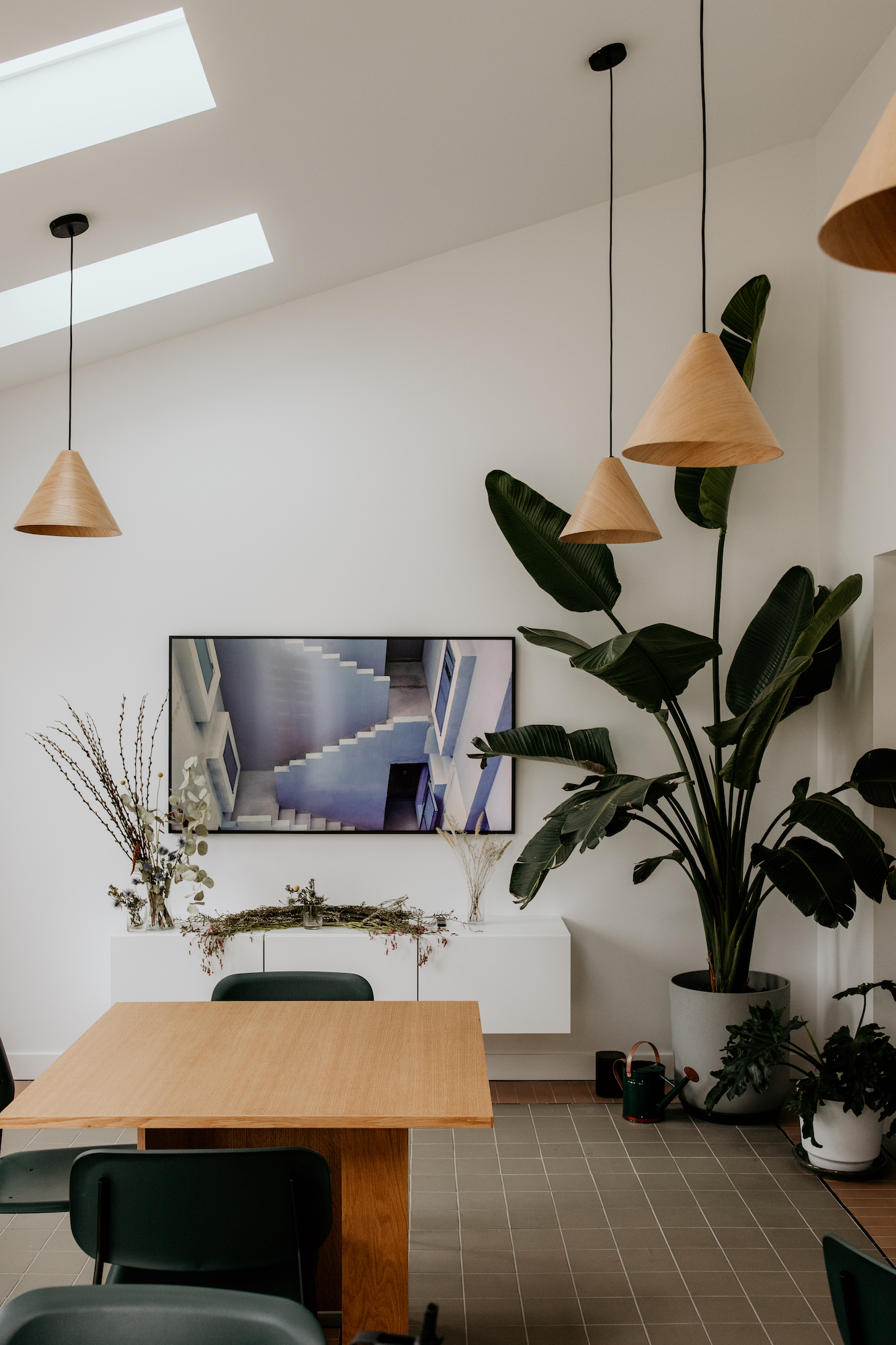
KN: So how did you decide on the name draft?
RZ: We went through a process of many different names, but draft encapsulates a lot of what the space is about. We’re all on our own journey. Even people who are really well-established in the studios upstairs that have a lot of clients need help; they’re still drafting and reiterating. So draft feels good.
KN: What inspires the spaces you create?
RZ: We try to design for the intended use and intended people. We brought a lot of different collaborators; we had a ceramicist make some of the light shades, worked with Loran Bohall to design the coves, met with wood fabricators–everything down to branding and photography. All this to say: a lot of our design is influenced by the people we hope to create spaces for. We really try to make something wonderful both functionally and form-wise.
KN: Do you have any personal design touches you love most about the space? What do you hope someone notices when they spend time in draft?
RZ: I hope that someone feels calm and at home. A lot of our design choices–down to the color palette, the warmth, how we have a lot of natural light but it’s a lot of indirect light–have been very intentional in terms of calming the senses. That’s not one thing, it’s just kind of everything.
AZ: On a more tangible note, the coves were the boldest thing we did. They’re constructed in such a way that eyesight is blocked when you’re sitting in them. I think it’s such a cool way to build privacy into a very public space while still allowing you to feel connected with everyone. My second favorite is the pop-up outlets that disappear into the tables. [laughs.]

KN: Why is it important to you that spaces like draft exist?
AZ: draft is all about the community that we build here, the people that inhabit the space and continue to come back and who feel like it’s their third place. I think that’s what’s most important about it. We want draft to live on its own–to just be a thing.
RZ: It’s super important that draft is not about us. draft is cool because of everyone that decides to be here. draft is important, but other creative spaces in Indy are also important. There’s BLOT, Soundspace, Tube Factory–they do amazing stuff, too.
KN: Switching gears a bit, let’s talk about your tie to CreativeMornings. You are hosting their monthly event with Fred Miller. Their June theme is Reverie, which refers to that whimsical, lost-in-thought dream state. How do you incorporate reverie into your space? How does it resonate with you, draft, and your design work?
AZ: We made this space so that people could daydream.
RZ: The best ideas happen when the mind can wander. Reverie is so important, and we don’t do enough of it because there are so many distractions. We’ve done quite a few things in the space to try and bring that to draft. We have yoga every week. One of our members puts on a creative writing workshop. We want draft to be holistic.
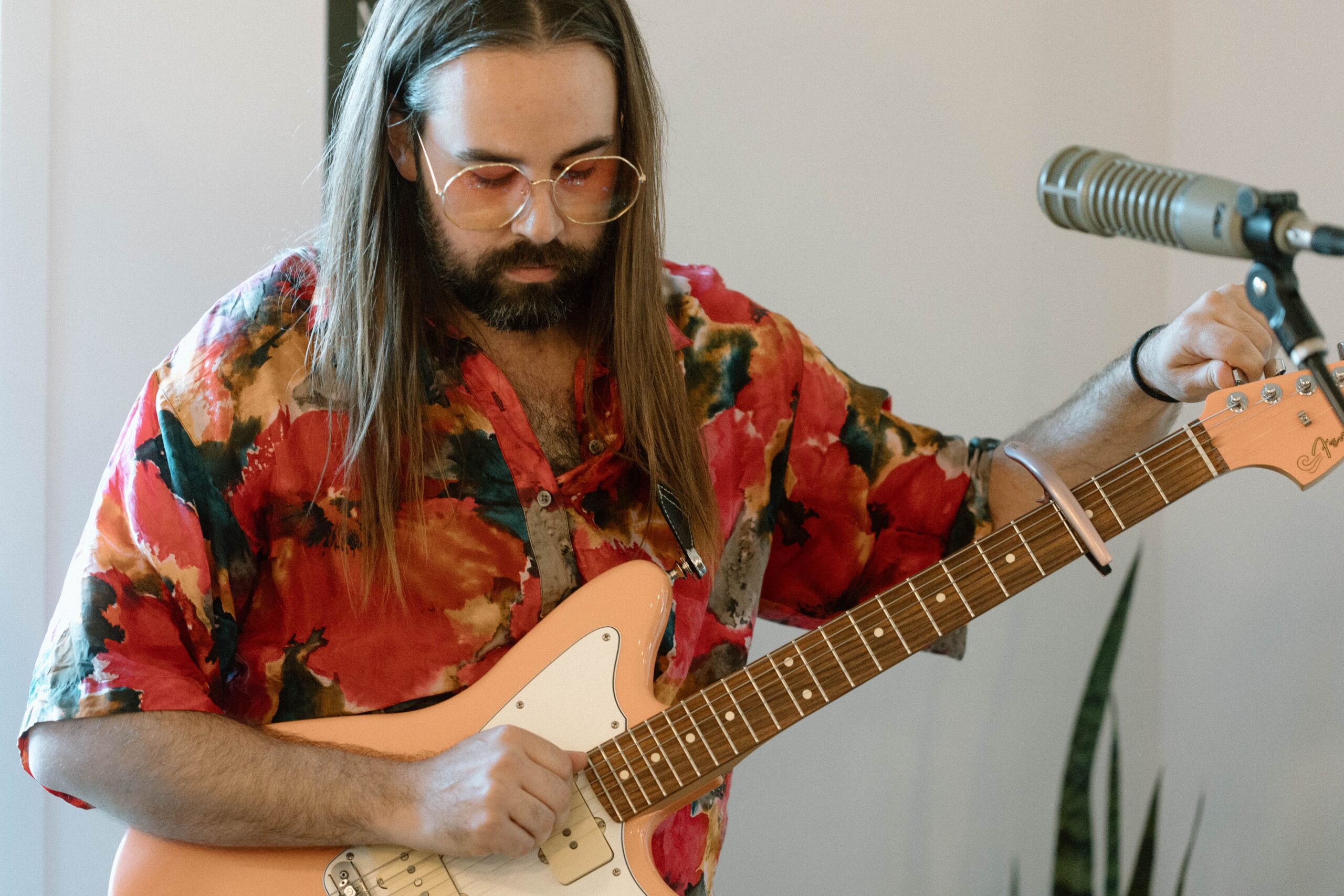
KN: Ironically, PATTERN’s July theme is Focus–neurodivergence, ADHD, honing in on what you need to do. How do you cultivate your space with focus in mind?
AZ: The coves are a perfect example of how we wanted there to be a spot for intentional, heads-down work. One of the interesting things I’ve learned is that some of our members work best, and enjoy, when they have options. They can come down from their studios, grab a cutie from the kitchen, peel it and talk to people, and retreat up to their private spaces when they need to get something done.
KN: How do you balance creating a sense of community with ensuring a space conducive to focus and productivity?
AZ: We wanted a place where people could rest and just be with themselves. I feel like the garden, especially, is one of those spaces.
RZ: And reverie is a really good word for the garden. It’s perfect that CreativeMornings is coming here for that theme. You never know when you’re going to get work done. So draft provides a space that offers socialization, rest, and–if you are feeling like you can do it–heads-down work, too. I think you have to provide it all.
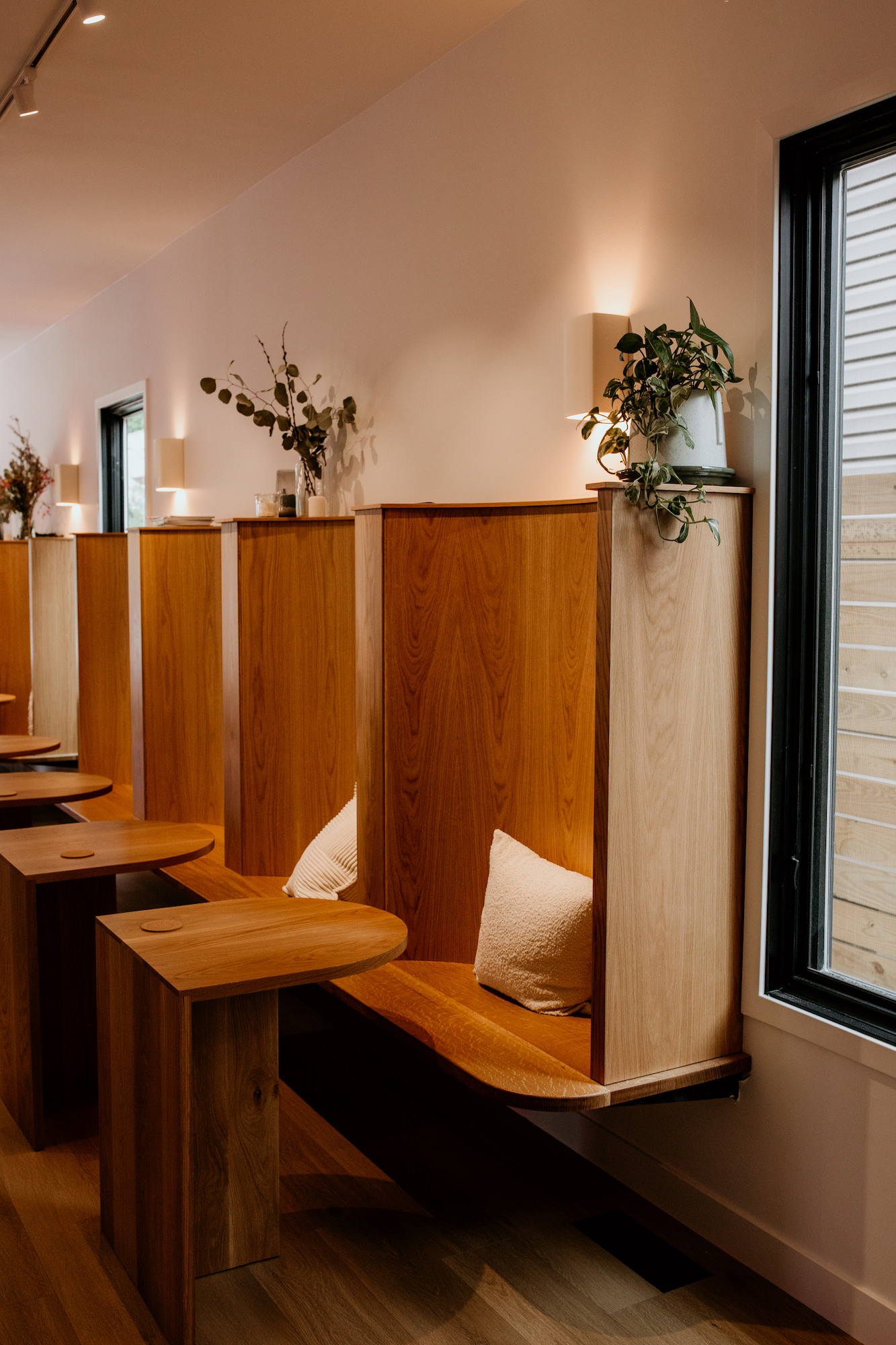
KN: Getting a bit more personal: Focus can look like a lot of different things for a lot of different people. What does Focus mean to you?
AZ: For me, Focus is a very specific playlist, headphones, blocking out everything else–it’s what I do when I need to do something very regimented and tedious.
RZ: I don’t know if my brain works like that. I’m picturing when you throw a balloon full of paint and it splatters; I feel like the splatter and that is where I work. [laughs.] That’s why we balance each other out so well.
KN: So how do you, as a couple, then, but also as individuals, interweave design and neurodivergence?
RZ: Trusting that just because you work a certain way doesn’t mean you are getting more or less work done than the person next to you. Respecting that we need to work differently to be effective, to feel fulfilled and purposeful. Everyone has something really cool to offer, and they’re doing it as long as we’re allowing them space and time to figure it out.
AZ: And as a couple, Rebecca throws the balloon of paint and it goes on me [laughs]. And then I’m like Great, I’m doing blue today. We both have very different styles, but they really complement each other.
KN: What are your hopes for the future of draft?
RZ: To just keep growing. We’re in our third month, so our biggest hope is to see people really getting collaborative work from draft. That’s what it’s all about. draft is about everybody else, about all of us.
